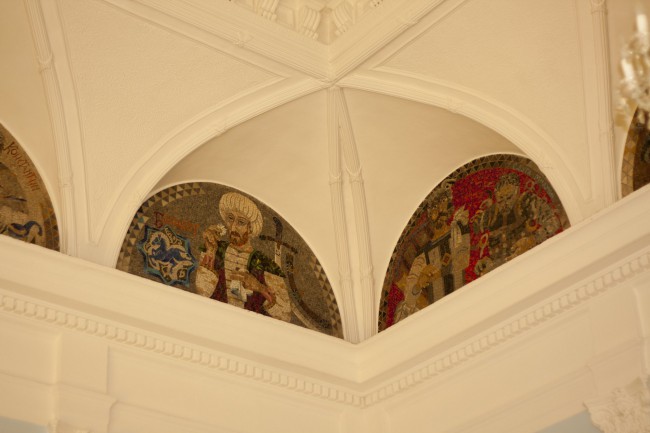Together with war veterans of the Croatian Army, the Army of RBiH, the Army of RS and the Army of Serbia, we visited the Town of Kruševac and the Varvarin Municipality in Serbia. The hosts were activists from the Humanitarian Organisation ‘Peacebuilders’ from Kruševac who are themselves war veterans.
Together with us from CNA, twenty-two former war veterans and current peace and reconciliation activists in the region found themselves in the same place.
The visit to Kruševac on 29 May was a continuation of CNA’s cooperation with ‘Peacebuilders’ that started in 2013 with the participation of their members at the War Veterans Training. Afterwards, they participated in joint visits of war veterans to sites of killing and commemorations. At their suggestion, we visited the Town of Kruševac so that the following day, on 30 May, we could attend the commemoration organised by the neighbouring Municipality of Varvarin to honour the civilians killed on the bridge across the Velika Morava River.
On that day in 1999, during the NATO bombing, ten people from this municipality were killed and dozens more were wounded.

During our visit to Kruševac, we were received by the Town Administration where we were welcomed by the Assistant to the Mayor, Nikola Petrović, on behalf of the local self-governance unit. He pointed out that Kruševac was a ‘Town of Peace’ and that this was both the feeling among its residents and the people representing them. The reception was covered by TV Kruševac[1]. The tour of cultural and historical landmarks began already at the Town Hall. The ‘Mosaic Hall’ contains 47 mosaics, each depicting a story from the town’s tumultuous past filled with wars and uprisings. It is interesting that apart from Serb heroes, the ‘enemies’ are also depicted in a way that does not question their humanity and dignity. This was an example of ‘deconstructing the image of the enemy’. We then visited the museum and monuments.
We arrived in Varvarin before the commemoration, at the invitation of the Municipal Mayor, Zoran Milenković, who welcomed us together with representatives of the local government. In addressing us, he pointed out that to him both as a government representative and personally as a man whose fifteen-year-old daughter was the youngest victim of the bombing of the bridge, this visit by people from all sides of the region was a an act of human solidarity bringing hope that better times are ahead when reason would overpower force and friendly relations would be built between people and nations. As he spoke about the events from sixteen years ago, he was chain-smoking. “These people, including my daughter, were guilty only of being on the wrong bridge at the wrong time,” he said.
We were soon joined by officers of the Army of Serbia who were visiting the Municipality. They were surprised by our presence and the idea that brought us together, and generally the fact that someone was working on reconciliation in the region. They expressed their support and thanked us for coming.

At the memorial by the bridge across the Velika Morava River, in the presence of a few hundred citizens and pupils from Vavarin schools, clerics, political and military representatives, the ceremony started with a service for the dead.
The gathering was addressed by the Minister for Defence of the Republic of Serbia, the Mayor and Municipal Council Chairman of Vavarin. In their speeches, they said they would not let those difficult days be forgotten, but that we must think of the present and the future, and build new bridges to bring people together and not divide them. The ceremony to mark this event also carried the message that something like this should never happen to anyone else again.
The Municipal Mayor also mentioned the war crimes charges against Germany, as a NATO member participating in the attacks against Yugoslavia of that time, filed by families of the victims and citizens of Vavarin before the German judiciary, which were rejected. He said that they would not give up and that some non-governmental organisations from Germany had offered their assistance in seeking out legal mechanisms to find those responsible for the attack and bring them to justice so that the families and friends of the victims could receive at least partial satisfaction.
As a symbol of memory, a pupil from the Vavarin Gymnasium threw a wreath into the Velika Morava River, after which the delegations, including our own, were invited to lay their wreaths and pay their respects to the victims.

After the commemoration, we shared our impressions within the group. Attending this event left a deep emotional mark on us. As one of the participants, an HVO war veteran, said, “as difficult as the commemoration today was, I found solace in the fact that at least me or my side were not directly responsible, that kind of pressure is always present in Bosnia when we visit others.”
Encouraged by the fact that the people we meet during these visits understand our mission and recognise it as necessary in our societies, we are determined to persevere.
[1] For more see: http://www.rtk.rs/?p=65533